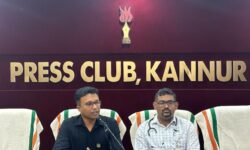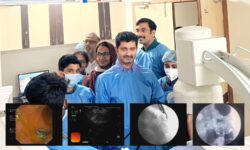India is now gearing up to achieve the 90-90-90 targets to minimize HIV transmission. Under this 90 per cent of all people living with HIV (PLHIV) will know their HIV status, 90 per cent of all PLHIV will receive antiretroviral therapy (ART) and 90 per cent of all people receiving ART will have suppressed viral load to minimize HIV transmission.
The National AIDS Control Programme (NACO)’s move from targeted viral load test (VLT) to routine VLT for all patients on ART is a step in the right direction. This will help in earlier and more accurate detection of treatment failure. A viral load test will be conducted for all patients at 6 and 12 months after initiation of ART. All second/third line patients will be tested every 6 months and the first line patients will be tested annually after 12 months of ART initiation, said Dr Ishwar Gilada, president of ASI and Governing Council Member of International AIDS Society.
VLT in India is done only at 10 national reference laboratories for suspected treatment failure cases. In 2016-17, only around 16,500 PLHIV who were on ART received VLT, but this capacity is escalated to 160,000 VLT in public-private partnership initiative. As per WHO and NACO guidelines, every PLHIV should have received the VLT. With such a small VLT capacity, it is not known how many of the documented 11.81 lakhs people on ART are virally suppressed, he added.
The HIV viral load test is used initially, along with a CD4 count, to determine the status of HIV infection in a person diagnosed with the disease.
With an estimated 21 lakh people living with HIV, India has the third highest burden of HIV in the world, after South Africa and Nigeria. India is among 193 countries that are aiming to end AIDS by 2030 and achieve 90-90-90 targets by 2020; which are not just milestones set by UNAIDS but also enshrined in Government of India’s National Health Policy (NHP 2017), said Dr. Gilada at the 18th Conference of AIDS Society of India (ASI), a nationwide network of medical experts providing HIV care, held here in Bengaluru.
“Despite formidable challenges, India has made commendable progress towards these ambitious goals, but there is a very long way ahead of us, if we are to deliver on these promises. Some partial success must not set in any complacency,” noted Dr Gilada who was among the first Indian doctors to begin HIV care.
“India’s AIDS response is at a precarious point. The new HIV infections which amounted to 87,580 is a decline of just 27 per cent between 2010-2017. Now this warrant us to reflect if we could have done better in preventing HIV transmission, diagnosing more PLHIV and putting more people on ART to inch closer towards 90-90-90 goals. We are almost the halfway point to reach the 90-90-90 targets by 2020, however the pace of progress in India has to be speeded up to match our national ambition to reach these goals,” he said.
“The theme of ASICON 2018 is ‘Breaking barriers for health, hope and healing.’ The clock is indeed ticking to break the barriers that stand in India’s way of achieving the 90-90-90 targets by 2020. After India adopted WHO’s Test and Treat strategy as a national policy, the entire machinery has been gearing up to achieve these targets. We are just about 26 months away from the deadline and a lot is yet to be achieved,” said Dr Gilada.




